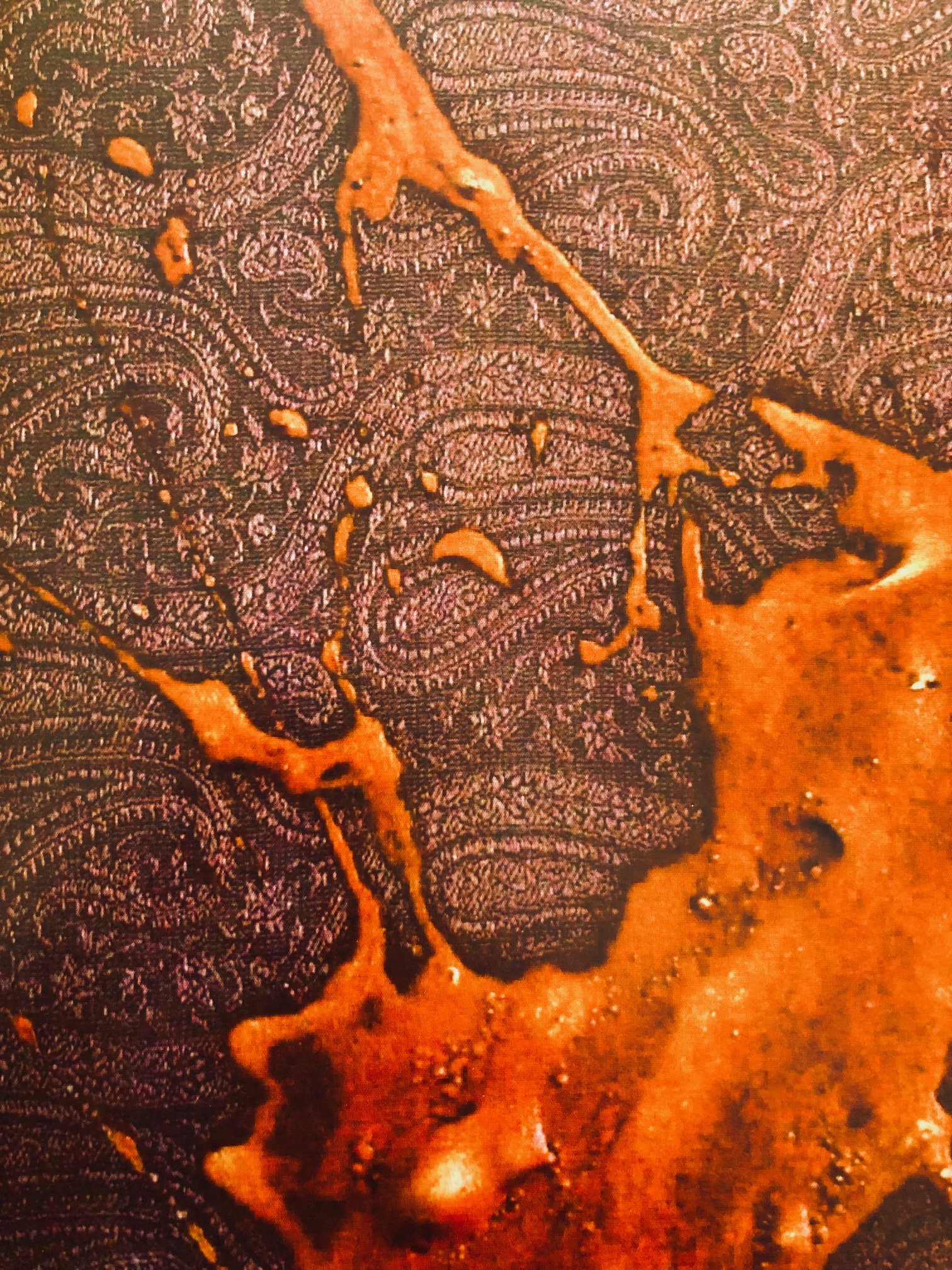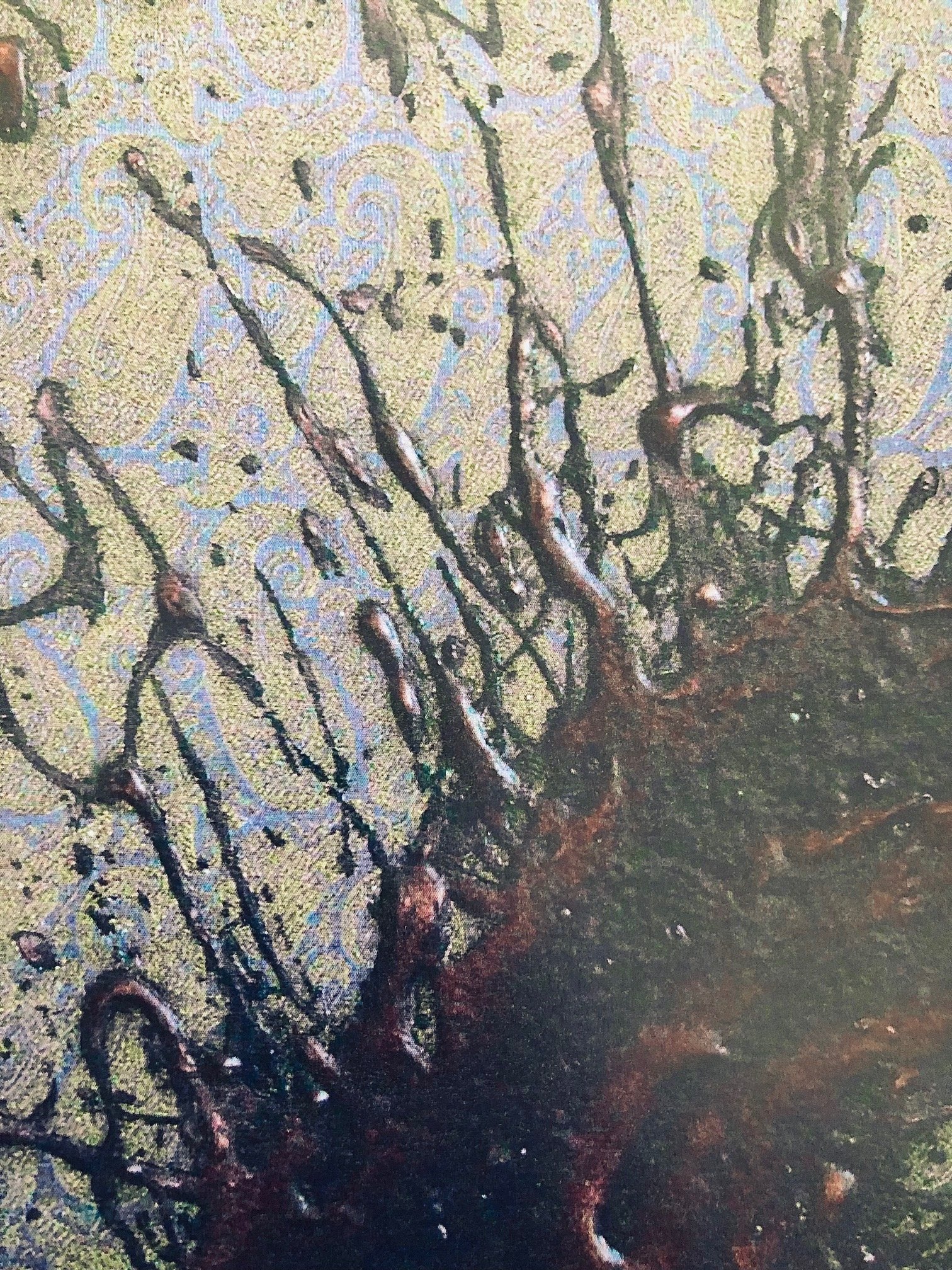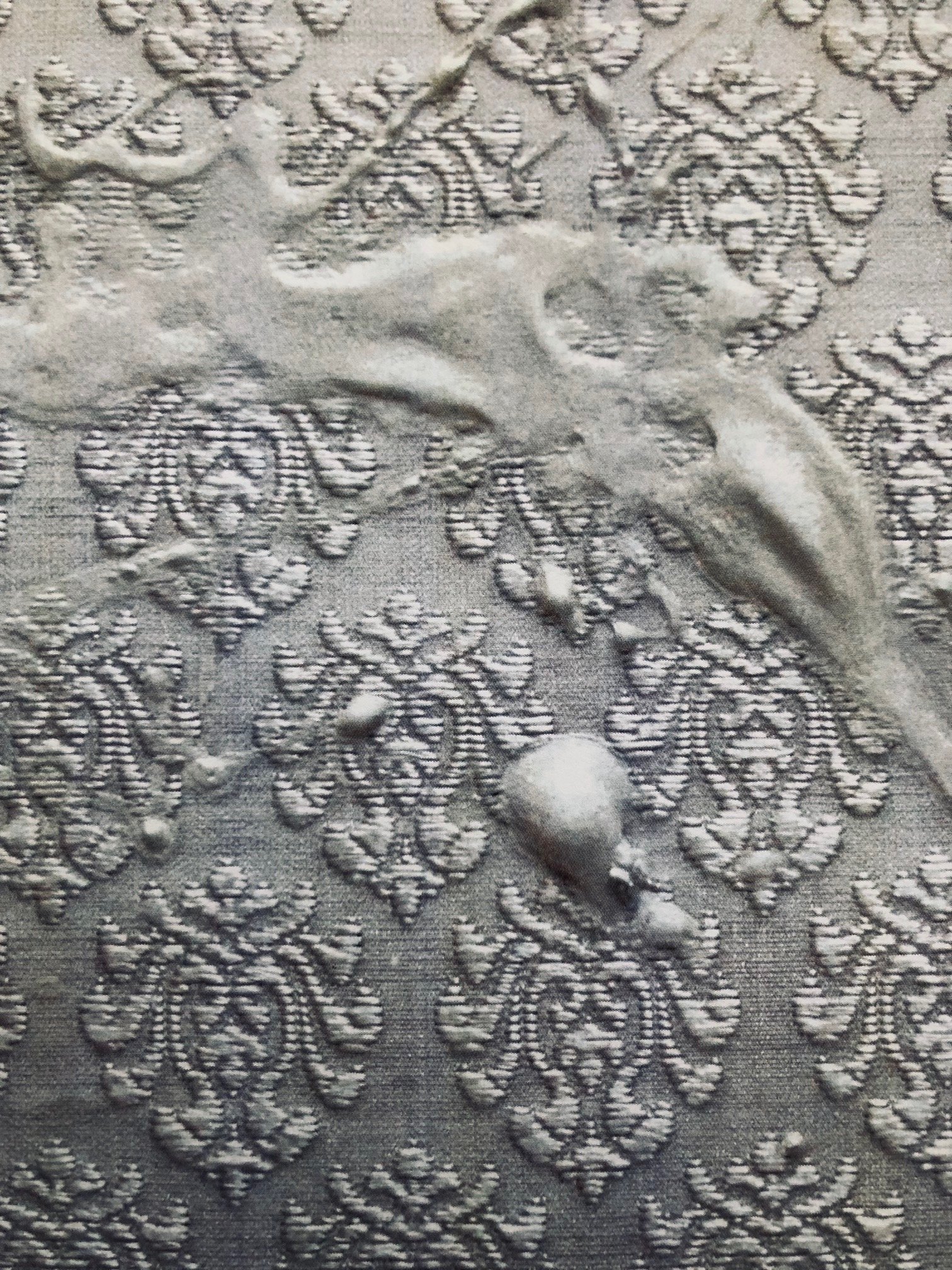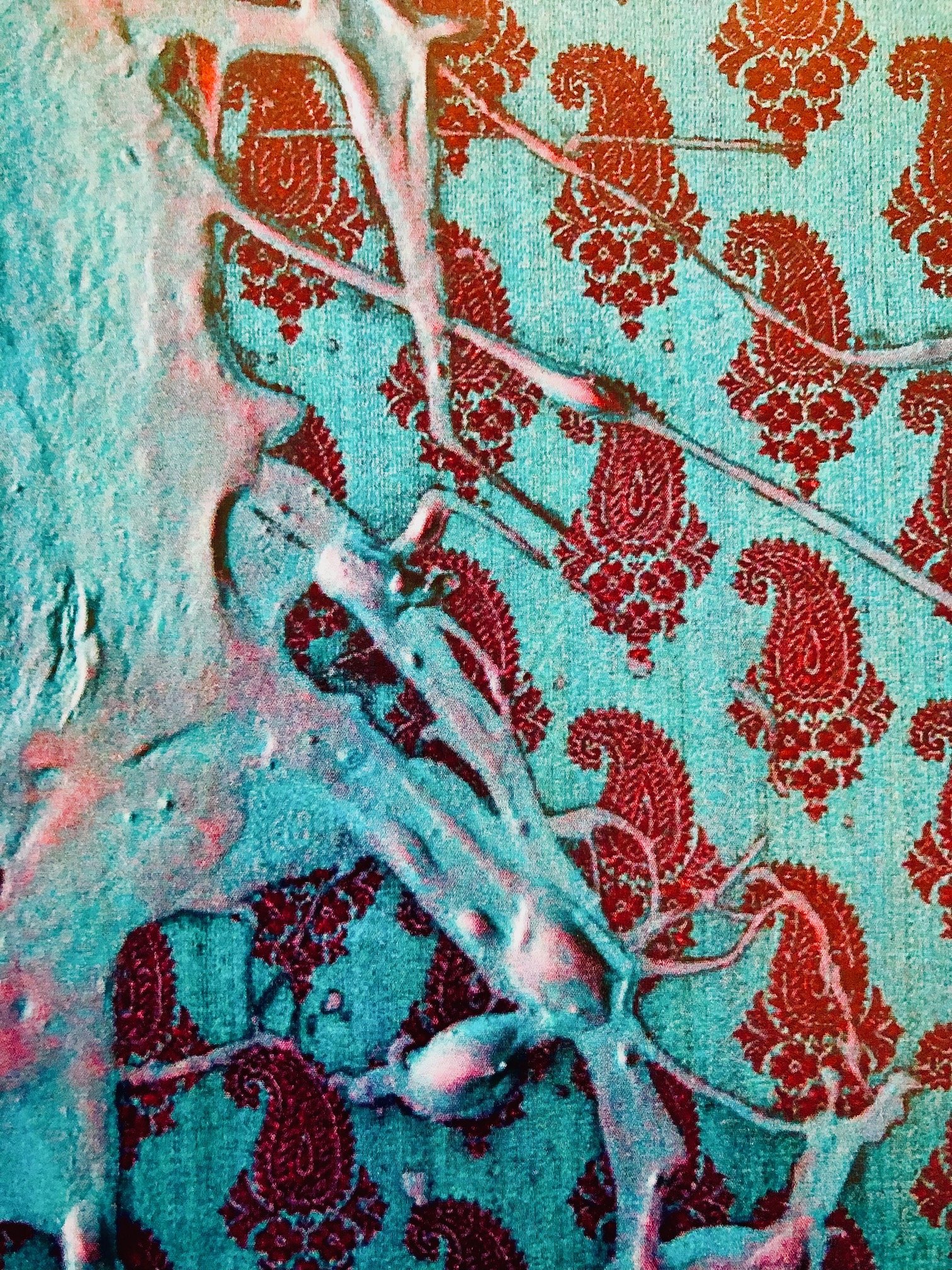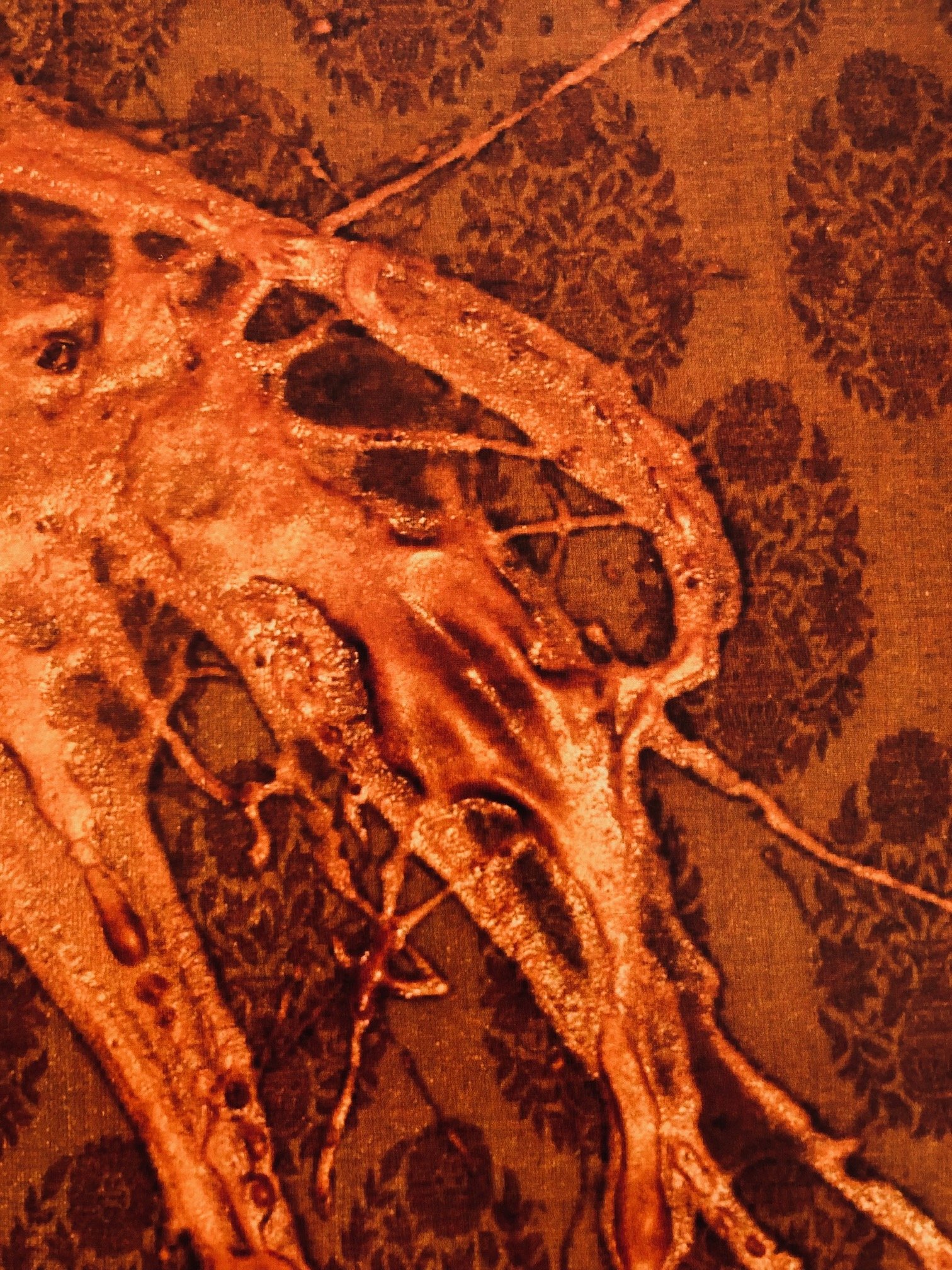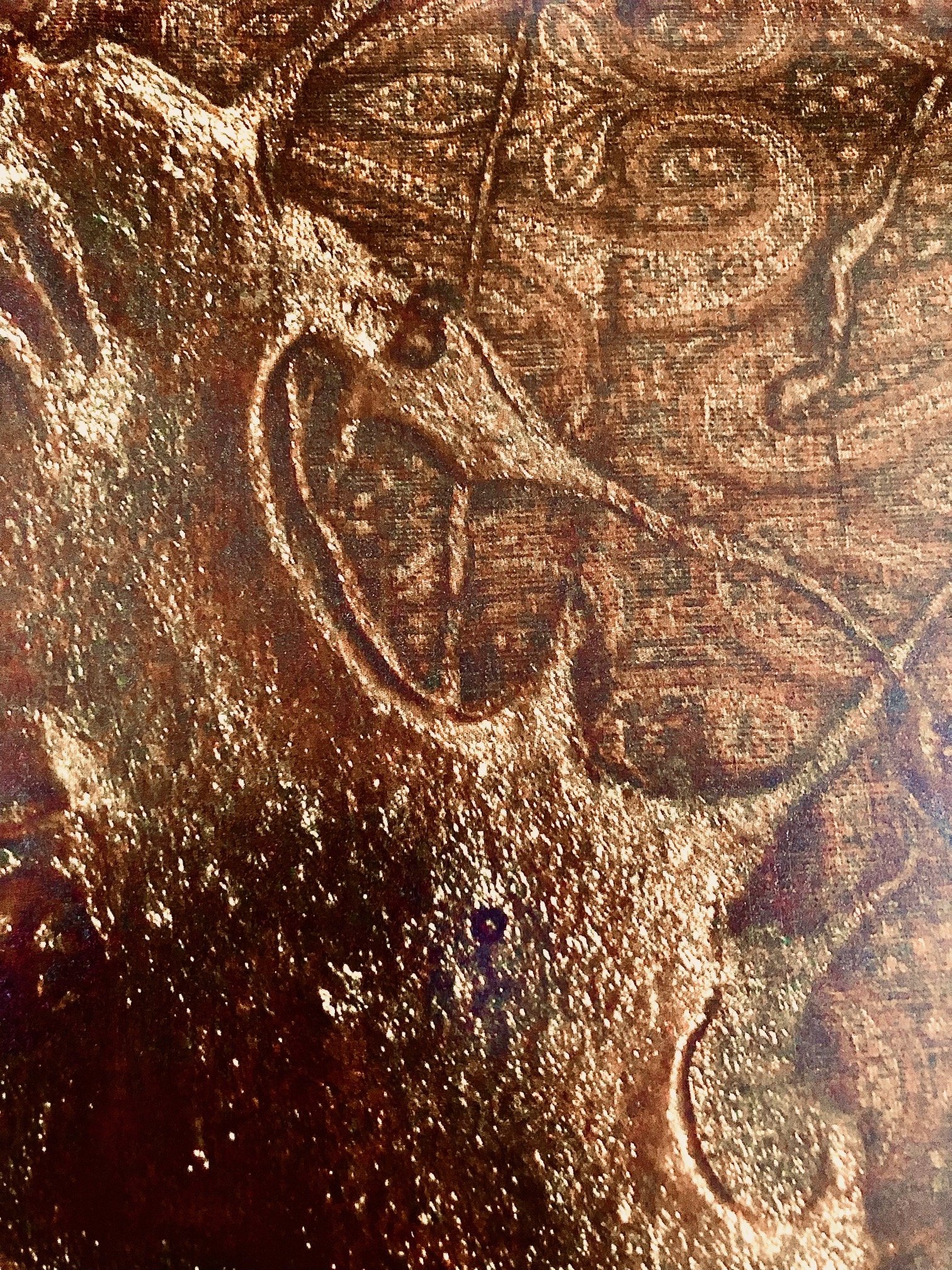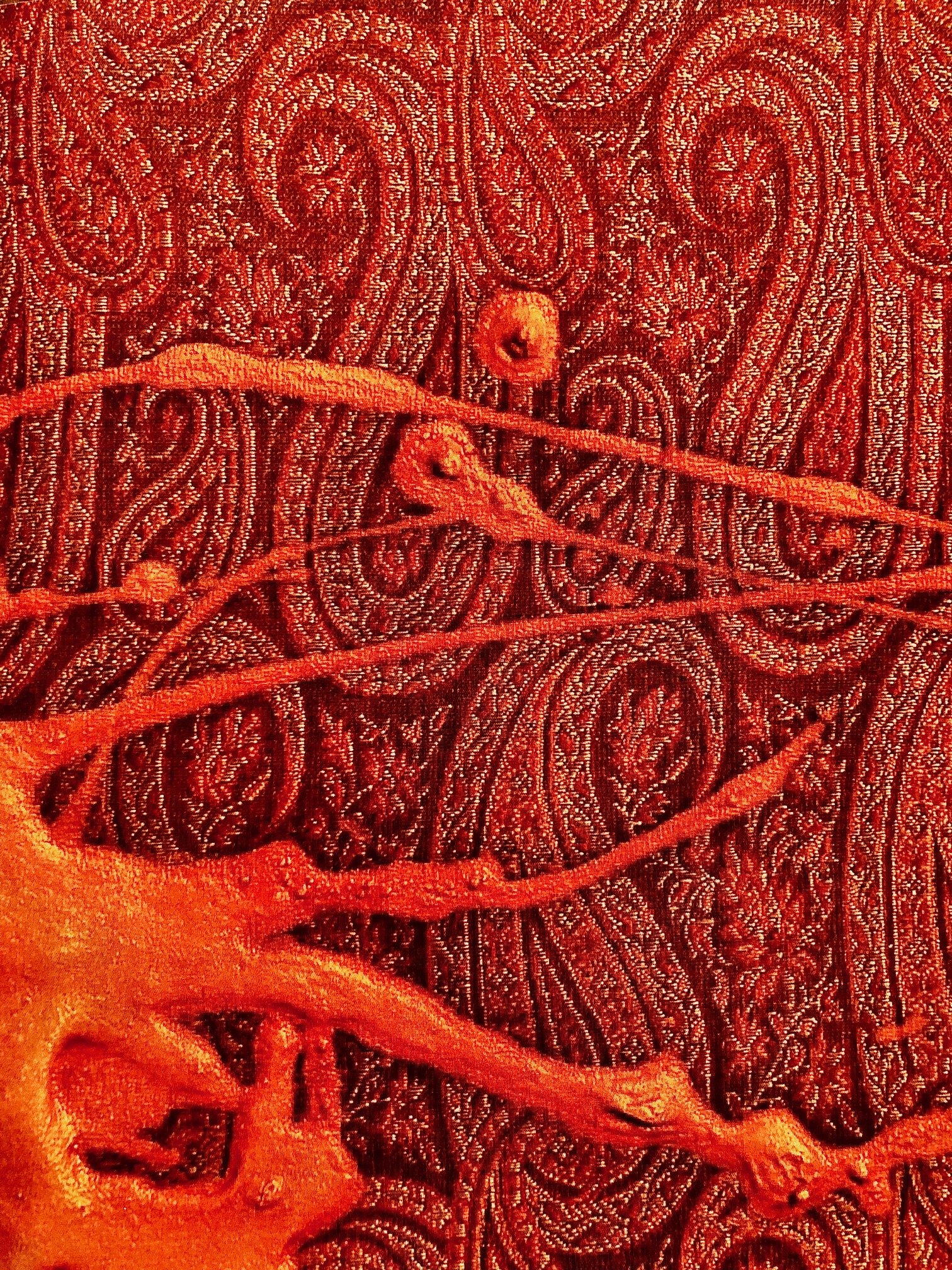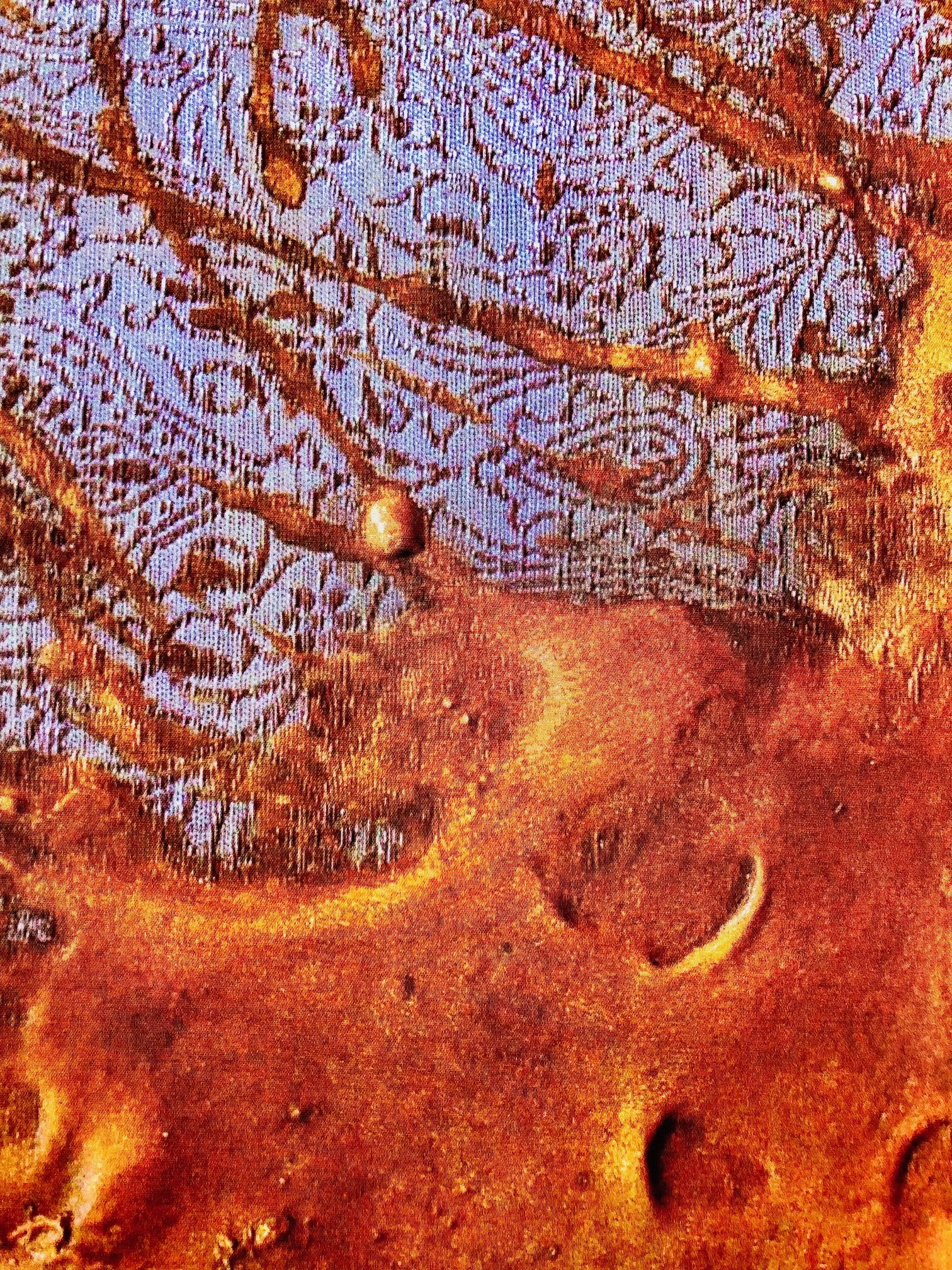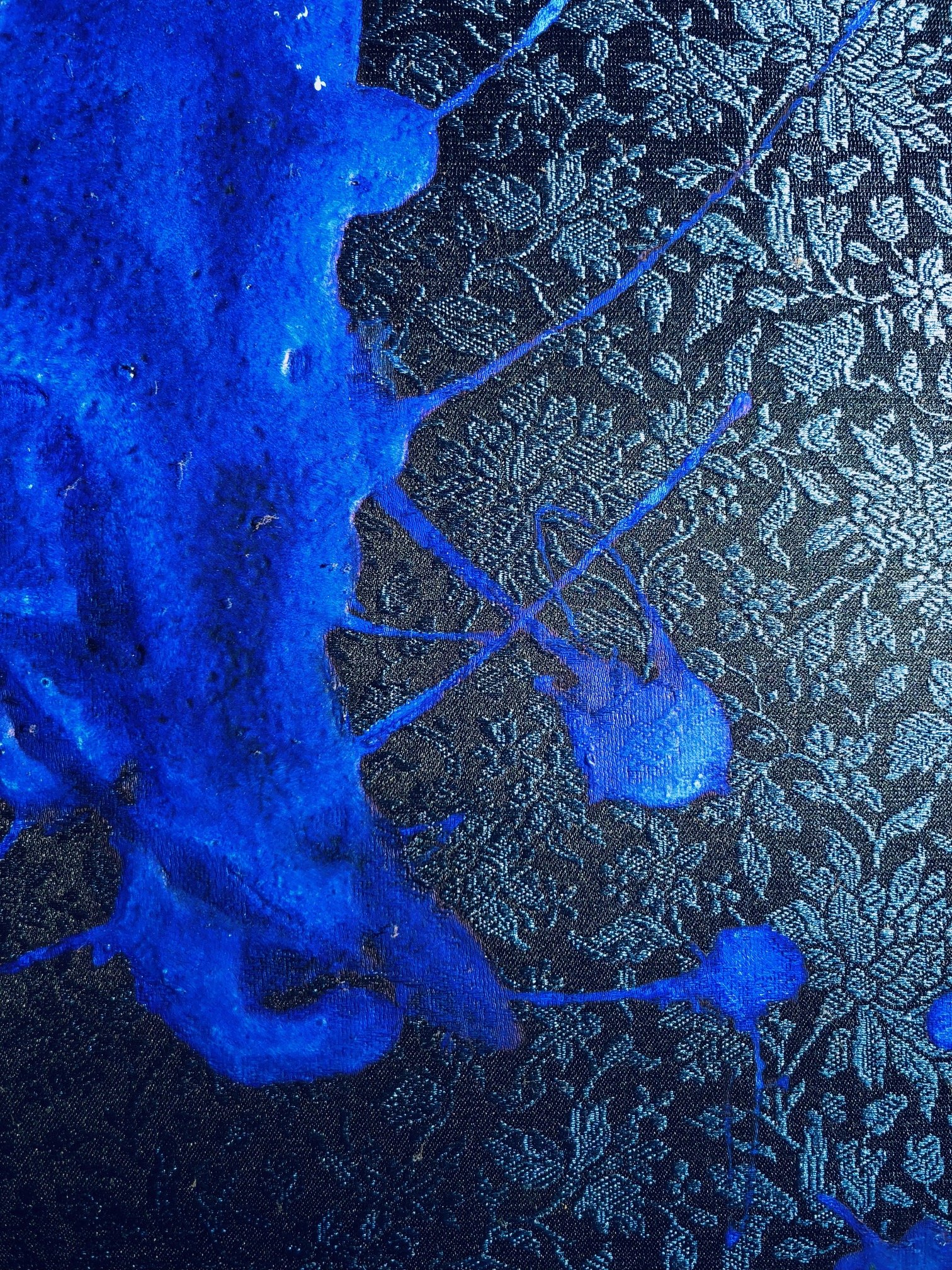The “Acerbic Drips” Series consists of twelve paintings on acid attack stories from Bangladesh. During my first visit to Dhaka in 2004, I had the unique honor of meeting and interviewing several survivors of acid violence. From a young man attacked over a property dispute to many young women attacked for rejecting romantic advancements and marriage proposals, to a young boy forced to drink acid by his aunt over property inheritance. The initial set of paintings was splatter paintings done on skin-complexioned panels. But as the goal of the paintings was to depict the beauty and resilience of acid survivors, the gesso splatters were created over delicately embroidered Indian silk with gold weaves. Though the textures of the splatter mimic the textures of acid-burned skin, they are of the same color as the silk fabric to convey a process of healing and rehabilitation. However, metaphorically, the splatters are the representation of the survivors as autonomous individuals. Some stand out more, and some blend in more with the background fabric, some are heavily textured, while others are not. The paintings attempt to convey the most arduous part of the acid attack journey— the rehabilitation process where survivors are assisted in returning back into society and trying to “fit in.” For many, the rehabilitation process lasts a lifetime. Detailed descriptions of their stories are in the book Corrode: An Artist’s Response to Acid Violence in South Asia.
“Rehabilitating Tradition”
Acerbic Drips Series
.
Oil, Gesso, and Silk on Panel.
30” x 35”
2008
During my first visit to Bangladesh, I had heard about a young, inspiring girl by the name of Nurjahan. Nur’s story was quite devastating. She was sent to a bigger city to live with her cousin, Bilkis, and her aunt and uncle, and to go to a better school. At school, two boys showed interest on Bilkis, but she rejected them both. One night, in the midst of complete darkness, the two boys entered the room where the women were fast asleep, and poured acid all over. Though the intended target was Bilkis, majority of the acid fell on Nur, completely damaging her nose, and her left eye, leaving her partially blind. Bur was initially sent to the Dhaka Medical Center, but from there she was sent to Fort Myers, Florida for reconstruction surgeries. Nur now lives in the United States with her partner, and has completed higher education, working full-time as a doctor. Her dream was always to help others.
“Reconstruction”
Acerbic Drips Series
Oil, Gesso, and Silk on Panel.
30” x 35”
2008
A timid, quiet woman, with a captivating smile on her face, Rohima was the only woman who was not attacked with acid. In due course, I learned of her story, and I never saw her in the same light. Rohima is a woman of tremendous courage, and resilience. At the age of 14, Rohima was married off to a 35-year-old man. A year after the marriage, Rohima’s husband was gambling and drinking with his friends. He asked Rohima to entertain them by performing sexual favors for all of them. Rohima refused and ran to the police station to file a complaint against her husband. She returned several days later to grab her belongings and found her husband and his friends in the house. The men grabbed Rohima, and with a kitchen knife, they cut off her arm, leg, and ear. Rohima lost consciousness and woke up to the men throwing her off on the railway tracks. She was fortunately found by the police and was rushed to the Chittagong Medical College. Rohima’s husband was caught and received a prison sentence of 8 years. The other men were never arrested for their crimes.
“Civil War”
Acerbic Drips Series
Oil, Gesso, Silk on Panel.
37” x 40”
2008
“Collateral Damage”
Acerbic Drips Series
Oil, Gesso, Silk on Panel.
34” x 36”
2008
“Violent Attraction”
Acerbic Drips Series
Oil, Gesso, Silk on Panel.
30” x 30”
2008
“Shadows in the Light”
Acerbic Drips Series
Oil, Gesso, Silk on Panel.
26” x 35”
2008
“Beautiful Catastrophe”
Acerbic Drips Series
Oil, Gesso, Silk on Panel.
35” x 40”
2008
“Wingless Butterfly”
Acerbic Drips Series
Oil, Gesso, Silk on Panel.
24” x 24”
2008
“Collapse”
Acerbic Drips Series
Oil, Gesso, Silk on Panel.
26” x 29”
2008
“Veil”
Acerbic Drips Series
Oil, Gesso, Silk on Panel.
20” x 36”
2008
“SYIMUS95”
Acerbic Drips Series
Oil, Gesso, Silk on Panel.
12” x 12”
2008
“CH1FHIN99”
Acerbic Drips Series
Oil, Gesso, Silk on Panel.
12” x 12”
2008
Acerbic Drips Details.
“The Divine Rebel.”
Oil and Embroidered Silk on Panel
32” x 48”
2022.














